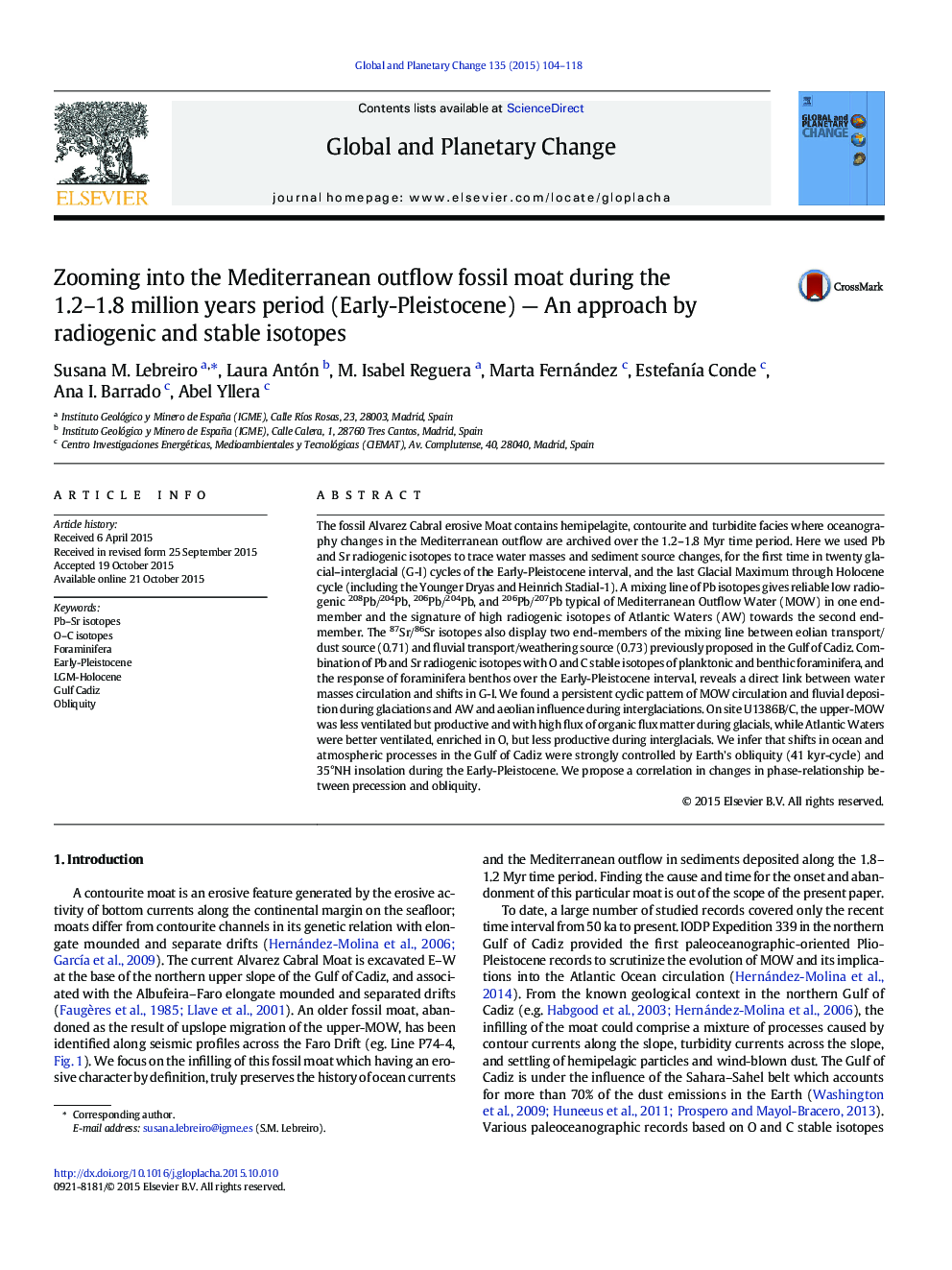| Article ID | Journal | Published Year | Pages | File Type |
|---|---|---|---|---|
| 6347975 | Global and Planetary Change | 2015 | 15 Pages |
Abstract
The fossil Alvarez Cabral erosive Moat contains hemipelagite, contourite and turbidite facies where oceanography changes in the Mediterranean outflow are archived over the 1.2-1.8 Myr time period. Here we used Pb and Sr radiogenic isotopes to trace water masses and sediment source changes, for the first time in twenty glacial-interglacial (G-I) cycles of the Early-Pleistocene interval, and the last Glacial Maximum through Holocene cycle (including the Younger Dryas and Heinrich Stadial-1). A mixing line of Pb isotopes gives reliable low radiogenic 208Pb/204Pb, 206Pb/204Pb, and 206Pb/207Pb typical of Mediterranean Outflow Water (MOW) in one end-member and the signature of high radiogenic isotopes of Atlantic Waters (AW) towards the second end-member. The 87Sr/86Sr isotopes also display two end-members of the mixing line between eolian transport/dust source (0.71) and fluvial transport/weathering source (0.73) previously proposed in the Gulf of Cadiz. Combination of Pb and Sr radiogenic isotopes with O and C stable isotopes of planktonic and benthic foraminifera, and the response of foraminifera benthos over the Early-Pleistocene interval, reveals a direct link between water masses circulation and shifts in G-I. We found a persistent cyclic pattern of MOW circulation and fluvial deposition during glaciations and AW and aeolian influence during interglaciations. On site U1386B/C, the upper-MOW was less ventilated but productive and with high flux of organic flux matter during glacials, while Atlantic Waters were better ventilated, enriched in O, but less productive during interglacials. We infer that shifts in ocean and atmospheric processes in the Gulf of Cadiz were strongly controlled by Earth's obliquity (41 kyr-cycle) and 35°NH insolation during the Early-Pleistocene. We propose a correlation in changes in phase-relationship between precession and obliquity.
Keywords
Related Topics
Physical Sciences and Engineering
Earth and Planetary Sciences
Earth-Surface Processes
Authors
Susana M. Lebreiro, Laura Antón, M. Isabel Reguera, Marta Fernández, EstefanÃa Conde, Ana I. Barrado, Abel Yllera,
